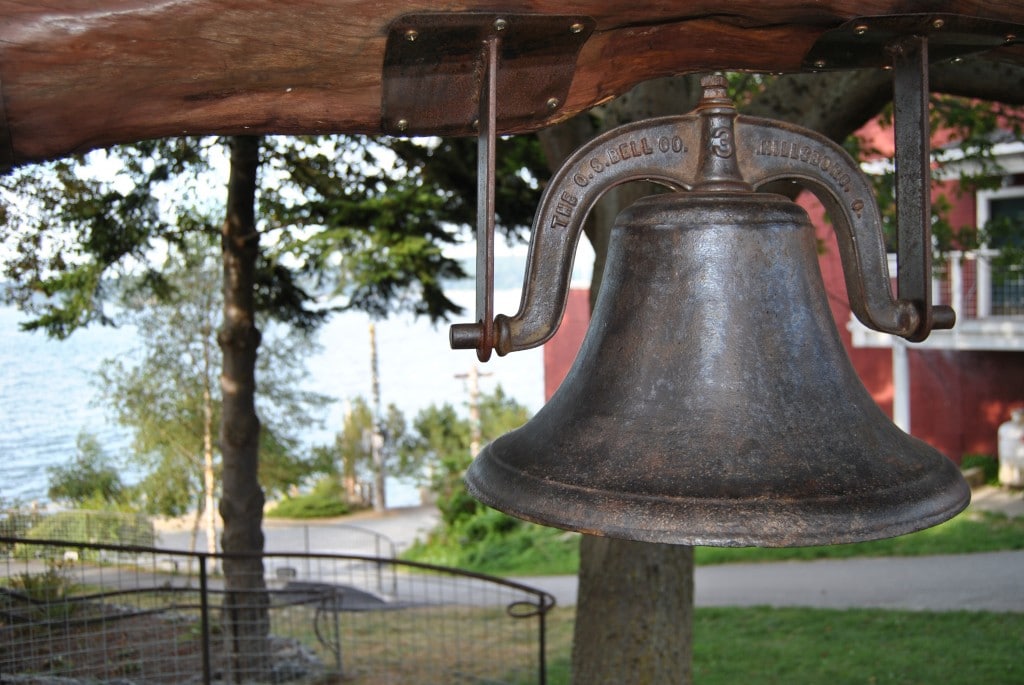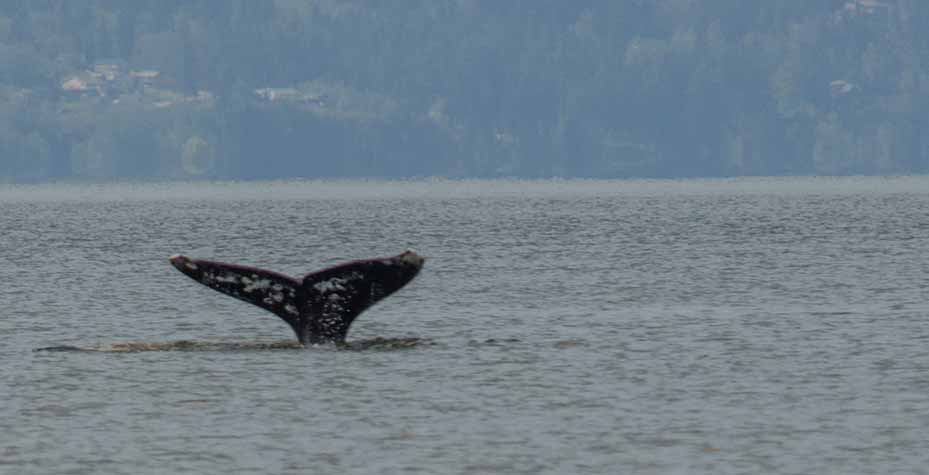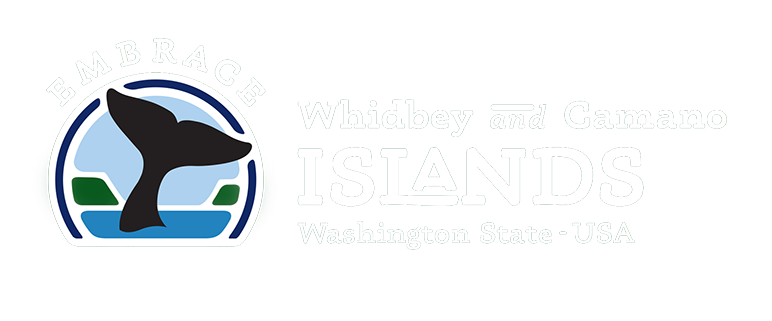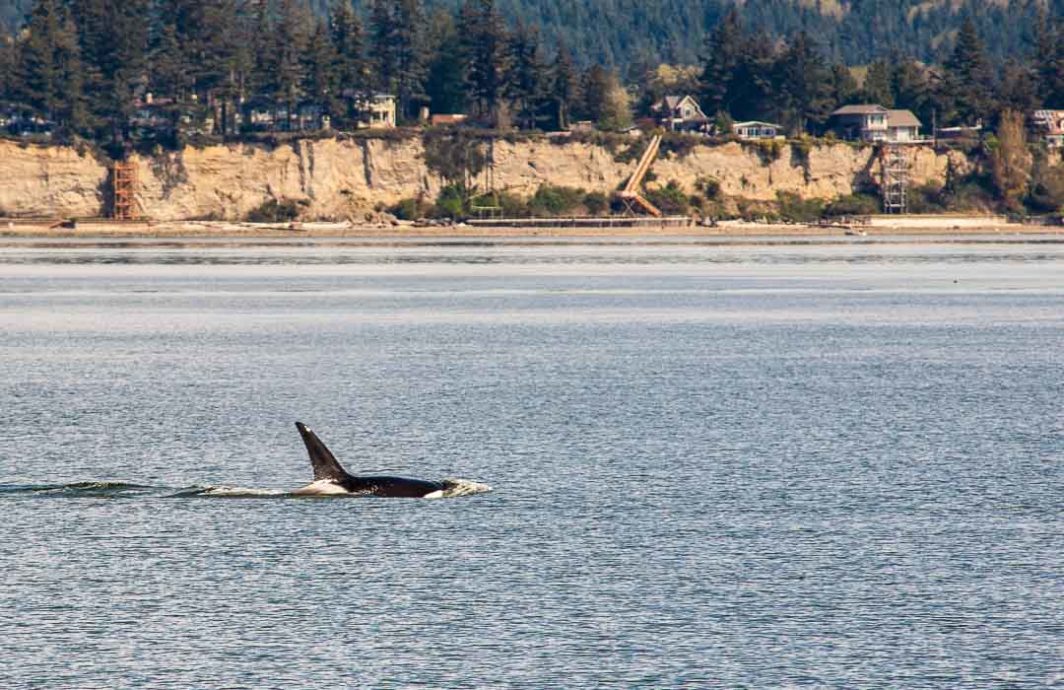The Whales of Puget Sound
After spending most of the summer in the San Juan Islands, our Resident orca pods venture south into inland waters for the fall and early winter months, traveling down Admiralty Inlet chasing chum salmon runs into lower Puget Sound.
BY SUSAN BERTA & HOWARD GARRETT
ORCA NETWORK
UPDATED 2/28/21
There are many opportunities to observe the orcas from the many miles of shoreline on Whidbey Island, the Kitsap and Olympic Peninsulas, and the inland waters of Puget Sound. Orca Network encourages shore-based whale watching, or watching for whales while commuting on Washington State Ferries. We offer a website and email list of recent whale sightings to increase opportunities for seeing the whales – it always helps to know when they are in the neighborhood! The Whale Sighting Network and Orca Network website also provide up to date information on the latest research and issues related to orcas and their habitat.
Langley was added to the Whale Trail program when founder, Donna Sandstrom, found out about the whale bell in Langley installed to ring when whales can be seen offshore. Whale Trail Website

The Gray Whales Miracle Migration takes place each spring. These Gray Whales will travel over 10,000 miles from the Baja Peninsula to the Bering Sea. Most of their journey is up to 20 miles offshore, but for a few brief months, these gray whales come through Whidbey and Camano Islands to rebuild their fat stores and gain energy for the last leg of their journey.

During March and April each year, whale watching tours depart from Langley and Oak Harbor. If you’re planning your trip for March or April be sure to check the Deception Pass Tours website for their plans as they have tours departing from Oak Harbor in March and April. Also, the 100-foot Mystic Sea, will provide tours from Langley between March and May. Visit their website for bookings and more information.
History of Orcas off Whidbey and Camano Islands
Historically, only J pod remained in the inland waters during the fall and winter months, however the past nine or ten years all three pods have been reported off Whidbey Island and in lower Puget Sound into December or later. It is unknown why there has been this shift, but one guess is the depletion of Chinook salmon in feeding grounds the orcas headed to in past years during the fall and winter, and increasing runs of chum salmon in inland waters. More research is being conducted into the prey species, feeding habits and habitats of the Southern Resident orcas, through the NOAA Fisheries Orca Recovery Plan under the Endangered Species Act listing for this orca population and Canada’s Dept. of Fisheries and Oceans.
According to the Center for Whale Research, the Southern Residents have had a tough year and seem to not be finding enough salmon. The Center typically has their annual survey completed by early summer, to confirm new births, deaths, and the exact population of this endangered community of orcas. But this summer the pods have not consistently stayed in the San Juan area, and when they are present, the pods are spread out over a large distance, making the survey more difficult. These behaviors indicate they are having a harder time finding salmon, especially Chinook which is their favorite.
Imagine seeing orcas swim by while you are standing on the shore of Whidbey or Camano Island!
With the Federal listing of the Southern Resident Orcas as Endangered under the Endangered Species Act, NOAA Fisheries and the Northwest Fisheries Science Center is conducting research projects to study the winter travels, prey species, and health of the Southern Residents both in Puget Sound and along the coast. Orca Network is working with Ken Balcomb of The Center for Whale Research to assist in these studies by providing data collected through our Whale Sighting Network. Orca Network’s Whale Sighting Network is also funded by the Whale Museum, the Russell family Foundation, Orca Network memberships, and contributions.
Planning a vacation to see the whales?
As you can imagine, “scheduling” whales can be difficult, but we can give you some general guidelines about when to see what kinds of whales off Whidbey Island!
The most reliable sightings are gray whales from the end of February through the end of May or into early June, and the best place to see them from is Langley, or from most beaches off South Whidbey Island. They’re also sometimes found further north in Saratoga Passage.
For orcas, we typically say October through December. They are much harder to predict, as they travel back and forth between lower Puget Sound, Whidbey Island, the San Juans, the B.C. Canadian Islands, the outer coast, and even down to California!.
Orca Network offers a free Whale Sighting Network where we send out emails with locations of whales in the area, and we also post them on our Website sightings page. You can find the sightings (along with a link to join the whale sighting network) on our website at www.orcanetwork.org.
When you do visit, we are asking for your help in keeping track of the orcas (and other whales), and request that you call in whale sightings so we can get the information as soon as possible. Whale reports may be called in to our toll-free number: 1-866-ORCANET, or you may email reports to us.
Please provide us with the location, time, direction of travel, approximate number of whales, and if there are any adult males (with large five – six foot dorsal fins). Also include any behaviors you may observe (breaching, spy-hops, feeding, etc).
If you would like to be on our Whale Sighting Network Email List to receive whale sighting information to improve your chances of observing whales off our shorelines, sign up on our website: www.orcanetwork.org . A map of recent whale sightings and reports as well as archived reports may also be found on our website “Sightings” page.
Thank you for your help in keeping track of our whale neighbors – we are very fortunate to live in a place where we can look out our windows and see those majestic black fins parting the waters!

